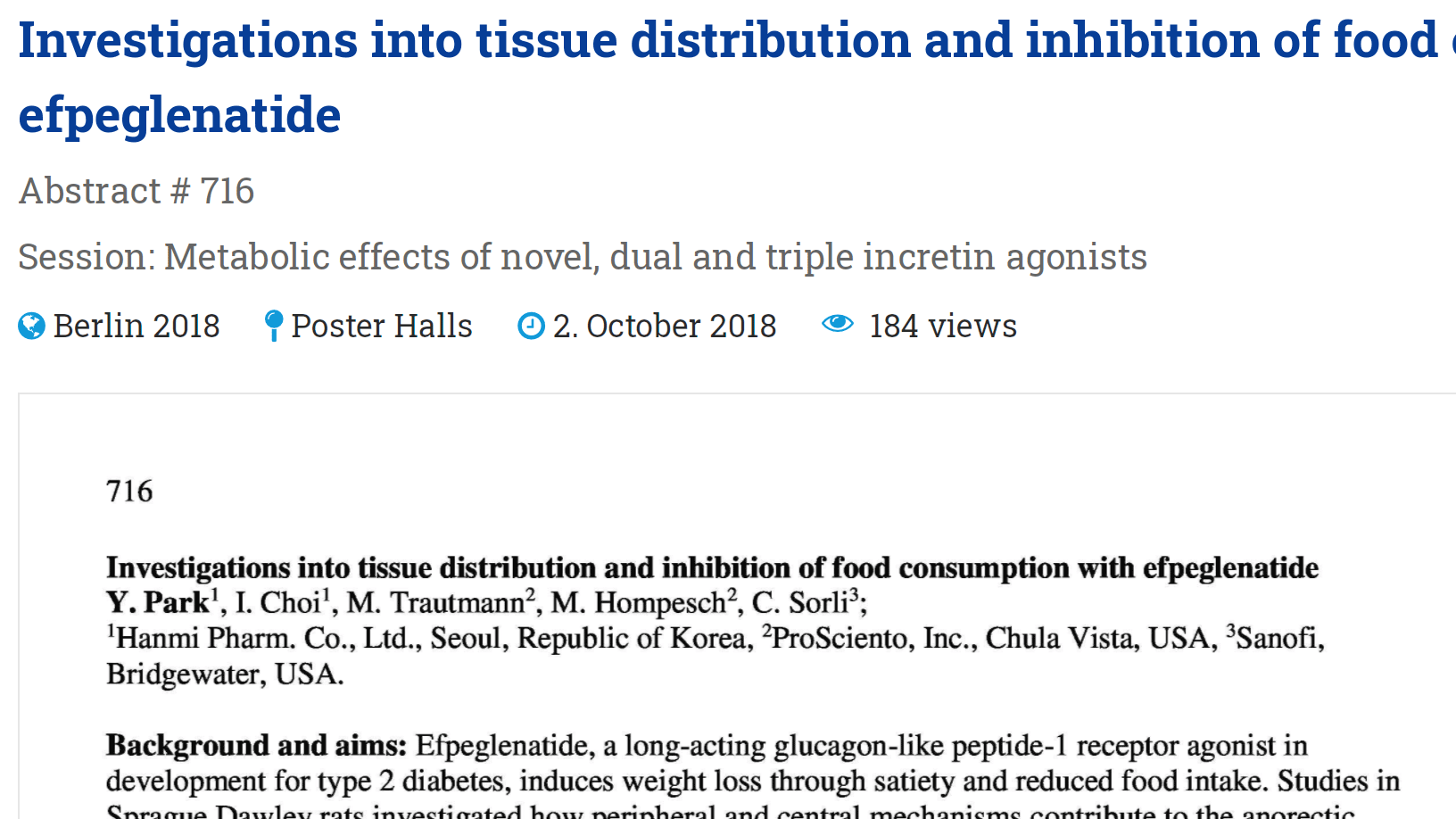About
About this Poster:
Efpeglenatide (efpeg), a long-acting glucagon-like peptide-1 receptor agonist in development for type 2 diabetes, induces weight loss through satiety and reduced food intake. Studies in Sprague Dawley rats investigated how peripheral and central mechanisms contribute to the anorectic effects of efpeg. Tissue distribution of efpeg was assessed by whole-body autoradioluminography with 14C-efpeg. The contribution of vagal nerve signaling to food intake control was assessed in vagotomized rats treated with exenatide (0.15 or 0.45 nmol/kg twice daily) or efpeg (0.71 or 2.1 nmol/kg every 2 days). Pharmacokinetic parameters and mean radioactivity of 14C-efpeg in selected organs/tissues are shown in Figure. Peak concentration (Cmax) of 14C-efpeg was highest in the kidney cortex; Cmax at all other sites was similar to/lower than in blood, relatively high in the intestine and pituitary, with below-quantifiable levels in the cerebellum/cerebrum. Inhibition of food intake was not attenuated in vagotomized vs. sham-operated rats at higher doses of efpeg (3-day cumulative intake: 47.4 vs. 49.4 g) or exenatide (54.9 vs. 60.7 g), suggesting a non-vagal mechanism for these anorectic effects. These findings suggest that central mechanisms are involved in the anorectic effects of efpeg in this animal model; potential cell-signaling effects of efpeg in the intestine and pituitary need to be investigated further.


